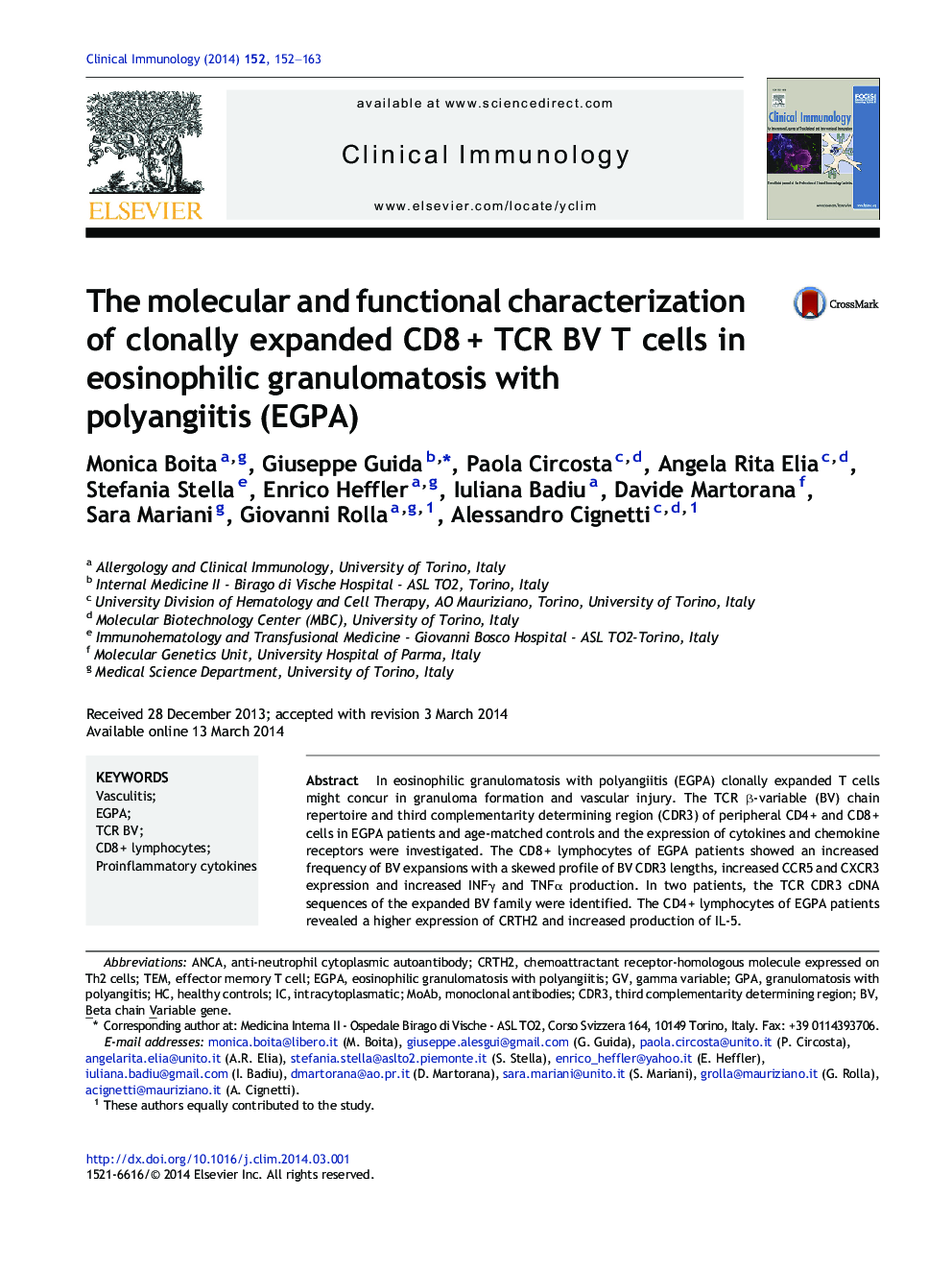| Article ID | Journal | Published Year | Pages | File Type |
|---|---|---|---|---|
| 6087564 | Clinical Immunology | 2014 | 12 Pages |
â¢TCR BV families of CD8 + T cells from EPGA patients are clonally expanded.â¢The CD8 + clonal drift is confirmed by the low complexity score at spectratyping.â¢Sequencing shows a dominant clonotype within expanded BV families.â¢Cytokine and chemokine analysis show a proinflammatory functional profile of CD8 + cells.â¢A pathogenetic role of CD8 + T cells in vasculitic damage is suggested.
In eosinophilic granulomatosis with polyangiitis (EGPA) clonally expanded T cells might concur in granuloma formation and vascular injury. The TCR β-variable (BV) chain repertoire and third complementarity determining region (CDR3) of peripheral CD4 + and CD8 + cells in EGPA patients and age-matched controls and the expression of cytokines and chemokine receptors were investigated. The CD8 + lymphocytes of EGPA patients showed an increased frequency of BV expansions with a skewed profile of BV CDR3 lengths, increased CCR5 and CXCR3 expression and increased INFγ and TNFα production. In two patients, the TCR CDR3 cDNA sequences of the expanded BV family were identified. The CD4 + lymphocytes of EGPA patients revealed a higher expression of CRTH2 and increased production of IL-5.In conclusion, CD4 + T cells display a Th2 profile and CD8 + T cells are clonally expanded in EGPA and have a proinflammatory phenotype, suggesting their pathogenic role in vasculitic damage.
